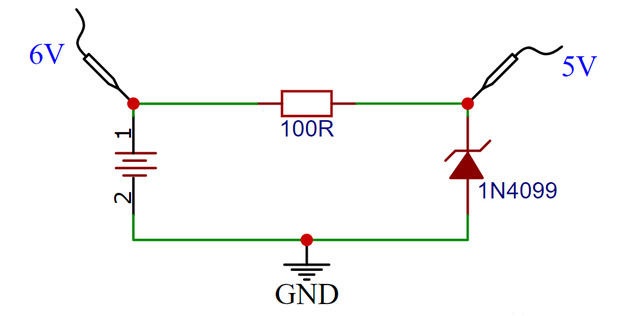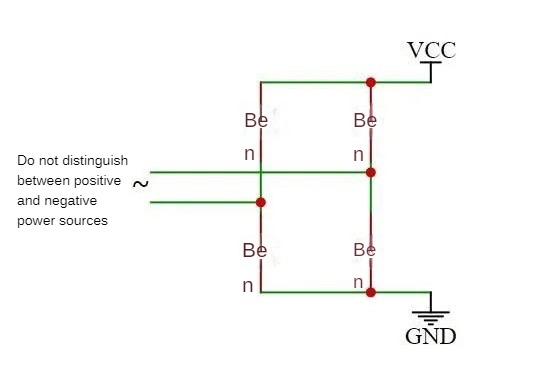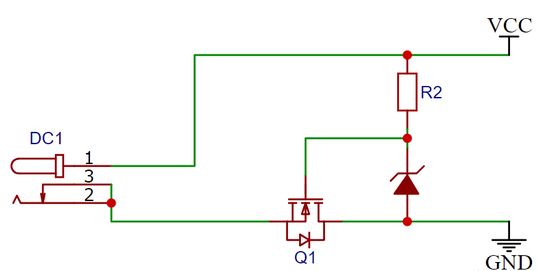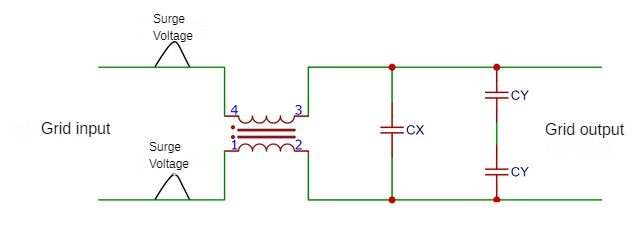1. Short circuit protection
The main function of the short circuit protection circuit is to disconnect the closed circuit in time to ensure the safety of subsequent devices when a short circuit occurs in the circuit system.
When a short circuit occurs in the power system, the current in the circuit will instantly increase to several times or even ten times the normal state. We can take advantage of this feature and put fuses in series in the circuit. When the current increases to the fusing current of the fuse, the fuse will blow due to its own overheating and open the circuit, which is one of the most common protection circuits.
But this kind of fuse has a disadvantage: when the fuse is blown, the engineer must manually replace the new fuse after troubleshooting, which is very inconvenient in some small spaces and other occasions, so the "self-recovery fuse" was born later. After the fuse is blown, it will be turned on again as the temperature drops, so that the power supply switch can be disconnected when a failure occurs, and the power supply switch can be turned on after troubleshooting. How does the self-recovery fuse achieve "self-recovery"?
Resettable fuse is composed of specially treated polymer resin and conductive particles distributed inside.
Under normal conditions, the polymer resin tightly binds the conductive particles outside the crystalline structure to form a chain-like conductive electrical path. At this time, the resettable fuse is in a low-resistance state, and the heat generated by the current flowing through the resettable fuse on the line Small, does not change the crystal structure. When the circuit is short-circuited or overloaded, the heat generated by the high current flowing through the self-recovery fuse melts the polymer resin, and the volume grows rapidly to form a high-resistance state, and the working current decreases rapidly, thereby limiting and protecting the circuit. Therefore, the protection circuit composed of resettable fuses can also undertake overheating and overcurrent protection.
2. Overvoltage protection
Overvoltage protection refers to a protection circuit that automatically disconnects the power supply circuit when the power supply voltage exceeds the rated voltage. In electronic circuit design, a common protection method is to use Zener diodes for overvoltage protection. As shown below:

1N4099 is a 6.8V diode, if the input exceeds 6.8V, the output will be clamped around 6.8V.
3. Anti-reverse connection protection
Many electronic components do not allow the reverse connection of the positive and negative poles of the power supply. In the designed circuit board, if the external interface does not have an anti-reverse connection design, it is easy for the user to connect the positive and negative poles wrongly when using it, causing the device to burn and cause property damage. loss. The principle of the anti-reverse connection design circuit is to rectify the power supply to a certain polarity in the front stage of the power input and then connect it to the fixed subsequent stage. As shown below:

Another anti-reverse connection method is to automatically shut down when the power supply is reversed, as shown below:

This kind of circuit uses MOS tube to turn off, because the parasitic diode voltage drop of MOS tube is small, it can withstand larger current during normal use.
4. Lightning surge protection
Lightning is one of the serious natural disasters, and early electronic equipment such as televisions and refrigerators suffered greatly from it. In the author's childhood memory, I often heard that TV sets were broken after a thunderstorm night. With the development of technology, this kind of situation almost no longer happens in daily life. This is thanks to a lightning strike surge protection circuit.
When a lightning strike occurs, the zero potential near the ground point will be raised, resulting in unstable power supply voltage. If lightning strikes near a power supply line, the induced voltage cannot be underestimated. The waveform of the swell is very similar to the sudden waves on a calm beach, we vividly call it a swell.
In order to eliminate this surge voltage, the commonly used devices are: discharge tube, varistor, TVS, common mode inductor and other devices.
Among them, the protection principle of the discharge tube, varistor and TVS is that when the voltage exceeds a threshold, the resistance of the device will decrease rapidly. We connect the device in parallel in the circuit to provide a discharge channel to the ground. Common-mode inductors use the characteristics of inductance to allow only two voltages with the same phase and opposite amplitude to pass through, and the surge is generally two identical signals, so the surge will be suppressed. Usually, common-mode inductors are used in discharge tubes, voltage The post-stage of devices such as sensitive resistors.
The common mode surge suppression circuit is shown below:

5. Static protection
Electrostatic discharges often occur when the human body comes into contact with electronic equipment, especially in winter. In fact, the voltage of thousands of volts is similar to the above-mentioned lightning surge situation, and can also be handled by the above-mentioned scheme.



























